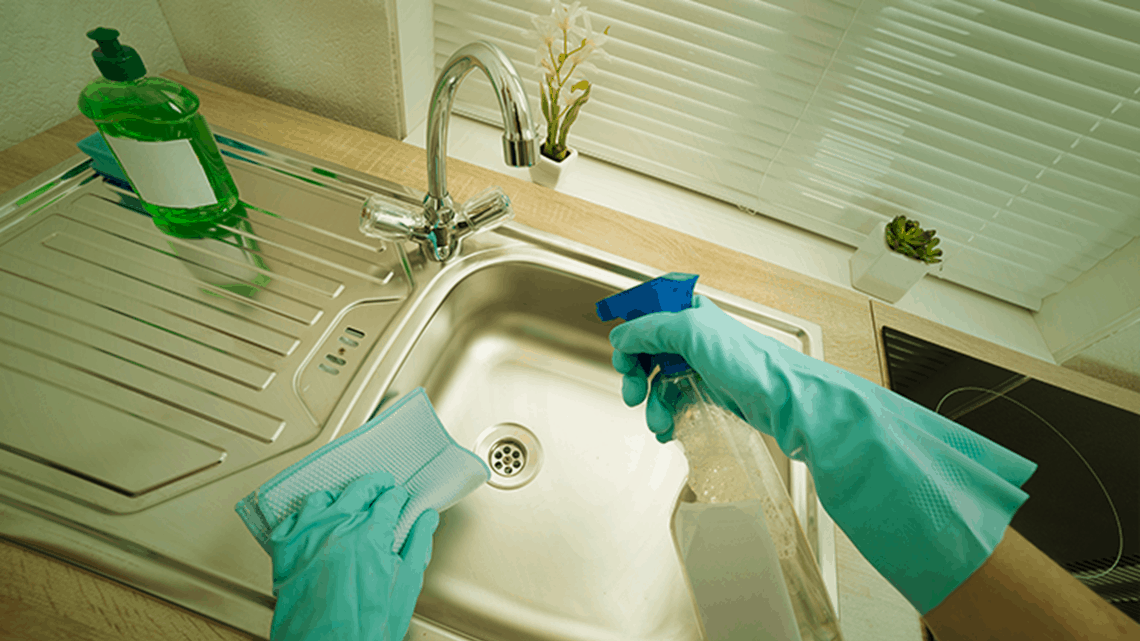Actionable guide to cleaning kitchen faucets
Making those rusty, hard-to-remove spots on your kitchen taps go away is a tough task but with these practical tips, things might get easy for you
We don’t look forward to doing household chores on a daily basis, if anything, this daunting task just haunts us until we are done with it. However, if we choose not to deal with it right away, this challenging task progresses to become an exasperating one. This situation is preventable and can be diffused easily if we know how to do things correctly.
Much like other areas of the house, there is a precise method of cleaning kitchen faucets. Kitchen taps can sometimes be one of the dirtiest surfaces within a household and at times, it takes months before somebody pays attention to the matter. Until then, gunk and rust keep working hard to cut through metal surfaces ultimately damaging them and making your kitchen look displeasing, ugly, and hideous. This is why keeping your kitchen clean is an utmost necessity.
Exploring the basics
Before jumping to advanced breakdown of stains and their causes, one should know the principles of basic cleaning. For a kitchen faucet, basic cleaning is the same as for any other surface around the house. Running a damp rag across and then drying it up with a dry cloth is a quick and efficient way of cleaning and preventing any additional marks due to drying water.
Now you can apply the same method to pretty much all sorts of kitchen faucets including but not limited to touchless faucets, commercial faucets, and pull out faucets. If you think that this simple method is not good enough then you can always use regular house cleaning products that would go gently with the faucet material. Application of the product would require a clean cloth and after you have wiped down the tap then you should wipe it again with a dry cloth preventing any unwanted marks.
Carrying out this procedure would only ensure that your faucet appears clean and nothing more. If you are worried about hygiene maintenance, then you’d have to do one up by adding other antibacterial cleaning supplies to the inventory. Keeping in mind the ability of kitchen faucet to harbor different microorganisms, you really need it hygienically clean and not just clean.
An alternative mixture
Before you jump into all ideas of pure genius, make sure that you know what is meant by hygienically clean hands? Centers for disease control and prevention (cdc) recommends washing hands with soap and water for 20 seconds in order to kill germs on your hand. Now you don’t need any best hand sanitizer to keep your hands clean, just soap and water.
In the same manner you don’t always need fancy cleaning products, a mixture of vinegar and water would also do well. Acetic acid is an active constituent of vinegar and not only removes tough to remove stains but also kills harmful germs – one of the best natural alternatives you can get your hands on. Mix up vinegar and water in a 1:1 ratio and then clean off with a damp cloth.
Cleaning green or blue deposits
Areas that have a supply of hard water are known for lime scale deposits too. On faucets, these can be visible as green or blue build ups. For effective removal of these tough stains, you’d have to utilize ammonia which is a known remover of stains. If used in the combination ratio of 1:1 that is water and ammonia respectively then you can expect quick results.
Moreover, if you think that this method is not working accordingly then let the solution sit for a while so that chemical breakup can weaken the buildup structure ultimately making it easier to clean. In addition to this, you can also use recommended kitchen cleaning products if you think ammonia is hard to handle.
Cleaning faucet rust
For those of you who don’t know the shades of rust, look out for brown or reddish brown buildups on your kitchen faucets. If you have positively identified these deposits, then its high time to use lemon juice. Yes, you heard it right, lemon juice and borax would work wonders for rust removal. Just apply the mixture and then wipe it off with a cloth.
Using tartaric acid
Deposits of iron and manganese may present as dark brown or black pigments on your kitchen faucet. Along with tarnished image of your fixtures, these harmless appearing spots also offer home to different germs and bacteria. Use tartaric acid and hydrogen peroxide to get rid of such buildups in an easy manner. You can always store such mixtures in spray bottle and then store it away for later use.
